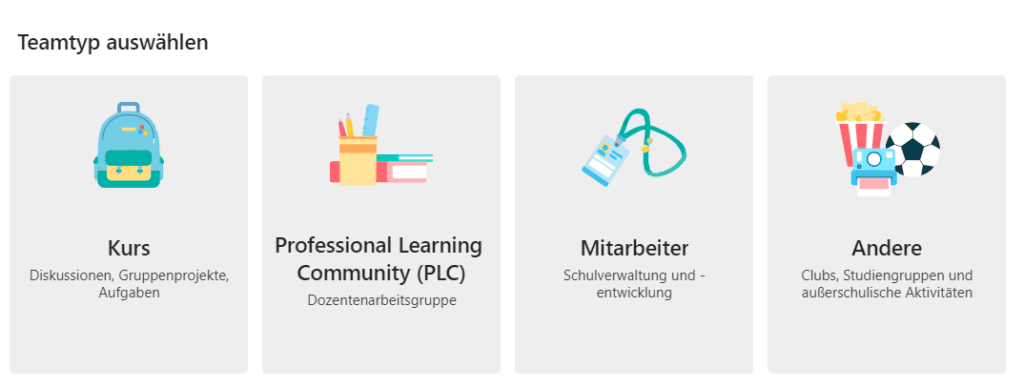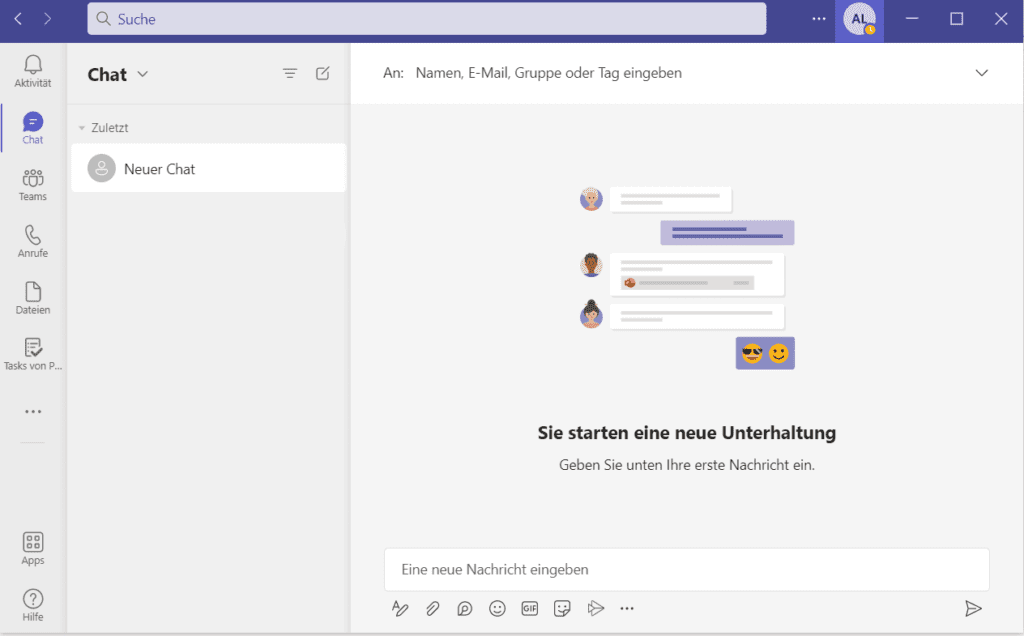Microsoft Teams
As in a virtual workspace, many teaching and learning settings can be mapped and (agile) projects managed in Microsoft Teams.

In a nutshell: What is Microsoft Teams?

Facts
Link: https://teams.microsoft.com
Login: E-Mail-Adresse, Login mit campusID
Lizenz: Lizenz an der TH Köln
> im Bildung 365 Office Paket enthalten
Technical requirements
– Internetverbindung
– Laptop, Smartphone oder Tablet
– Browser & App > App erleichtert Teilnahme
Microsoft Teams is a virtual workspace where members (of a team) collaborate in real time. You can make use of its numerous features, such as private and group chats, file and document storage, task planning, channels, and video conferencing.
Data Protection & Accessibility
Unfortunately, the data protection of Microsoft Teams is not clear. Therefore: Do not publish any data-sensitive content via the service!
Range of Features
- Chat (group or individual chats)
- Channels for organized conversations
- Task organizing (esp. Kanban Board)
- Wikis
- Office integration
- Videoconferencing
- Whiteboard
- Breakout rooms
- Streaming with Microsoft Streams
Uses
- Lectures
- Seminars
- Project seminars
- Group work & colloquia
- Unsuitable for confidential content
- Unsuitable for counselling
Step by Step
Microsoft Teams is available to all teachers and students at the TH. The Microsoft Teams desktop client is either pre-installed on your computer or it can be downloaded here.
Access Microsoft Teams from this website using your normal university credentials. Sign in with your TH Köln email address. You will then be redirected to the university login screen, where you can log in with your campusID.
Click on Teams in the sidebar and then on the Join or create a team button at the top (see video tutorial on creating a team (German)).

In the next window start the wizard by clicking on Create team. The first step will offer you four different presets (team types) for collaborative work.

Class: Every Class team comes with its own Class Notebook by default for distributing files and tasks. Team members (students) only have write permissions in certain areas. Teachers are team owners and manage the members.
Professional Learning Community (PLC): This type is suitable for larger groups in which everyone has the same read and write permissions. New members can be added at any time. By default a notebook is created with areas for meetings, planning templates, and evaluations.
Staff: The Staff type is suitable for working together in different work groups, where members should only have limited privileges. Team owners invite new members to join the team. The notebook contains sections for work groups, planning, and collaboration.
Other: Because there is no default notebook and all members have the same read and write permissions, this type is ideal for project work or group work on a topic.
Microsoft Teams offers a chat feature for exchanges in real time. You can create both individual and group chats. Audio and video calls can be made and files can be shared through chat.

A team can consist of several channels. You can dedicate each channel to a specific topic, department, or project, and add files, task planning, minutes, or a wiki. Meetings can also be held in channels.

Start videoconferencing in a chat or channel. To divide participants into smaller groups for discussions, group projects, etc., use breakout rooms. NOTE: Breakout rooms can only be created from a client version of Microsoft Teams.

Collaborative work is quite easy in Microsoft Teams when using a shared whiteboard. Once the whiteboard canvas has been started, participants can type in text or draw with ink at any time. Additionally, you can turn other apps into tabs at the top of any channel.

Microsoft Teams & Microsoft Stream
Make it easy for your team to collaborate using video by adding a Microsoft Stream channel or video as a tab in Microsoft Teams. For more information and detailed text instructions, click here.
Any questions?
Feel free to contact us by mail to lehrpfade@th-koeln.de!
Good Practices
Links & Literature
- Accessibility for Microsoft Teams from the manufacturer
- Video training for Microsoft Teams from the manufacturer
- Teaching with Teams: An introduction to teaching an undergraduate law module using Microsoft Teams. Martin, L. & Tapp, D. (2019)
- Responses to Covid-19 in higher education: Students’ learning experience using microsoft teams versus social network sites. Sobaih, A. E. E., Salem, A. E., Hasanein, A. M. & Elnasr, A. E. A. (2021)
- Perceived usability evaluation of Microsoft Teams as an online learning platform during COVID-19 using system usability scale and technology acceptance model in India. Pal, D., & Vanijja, V. (2020)



